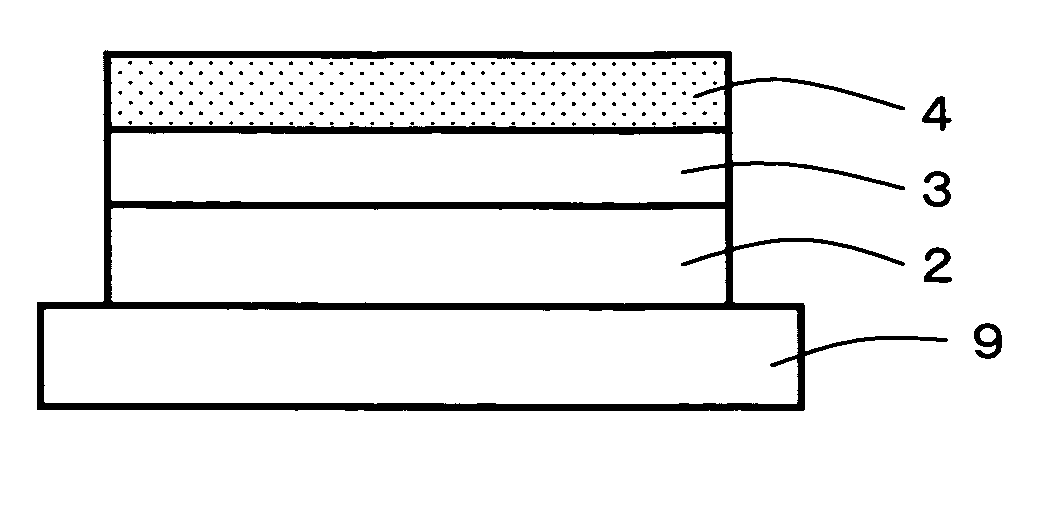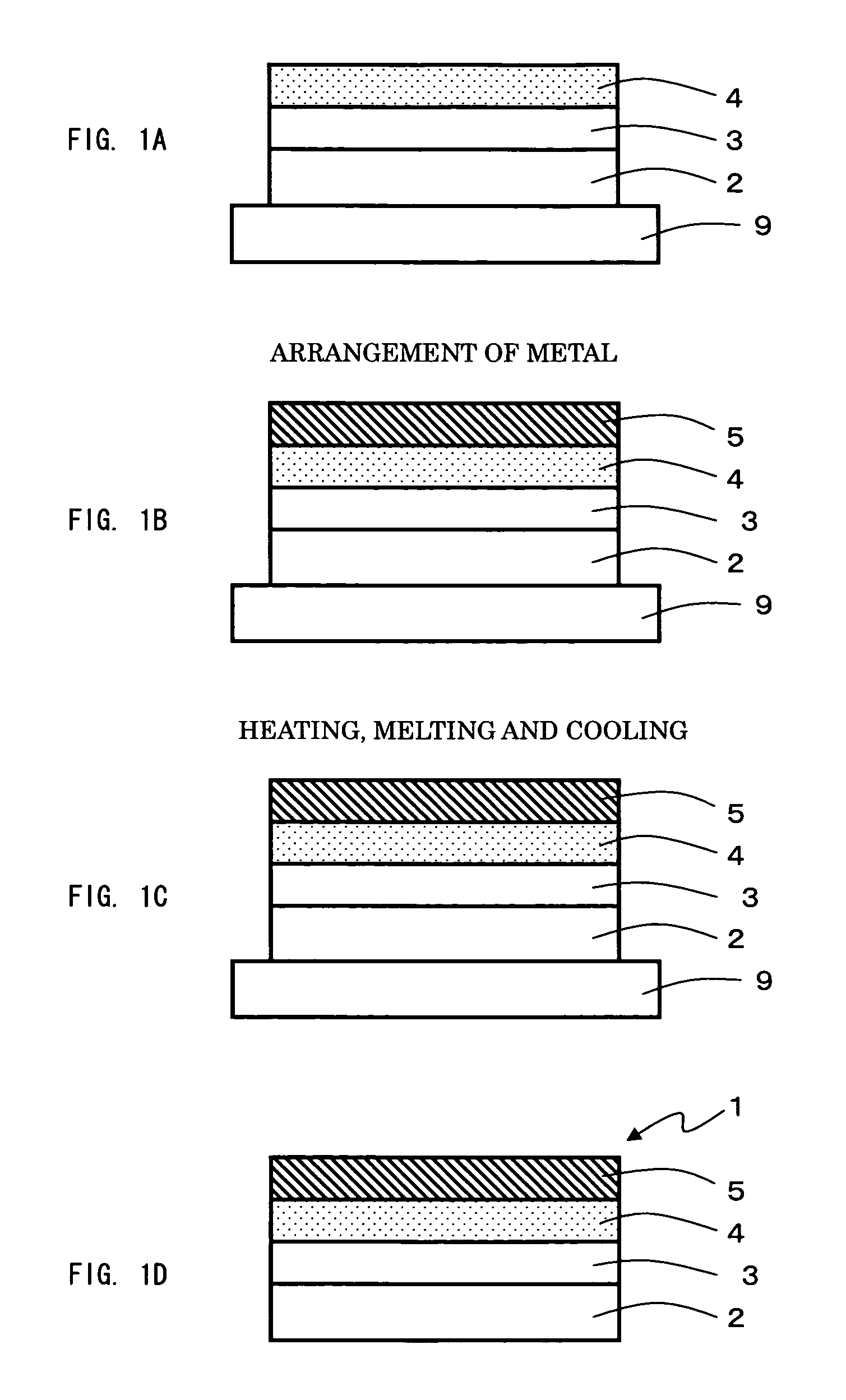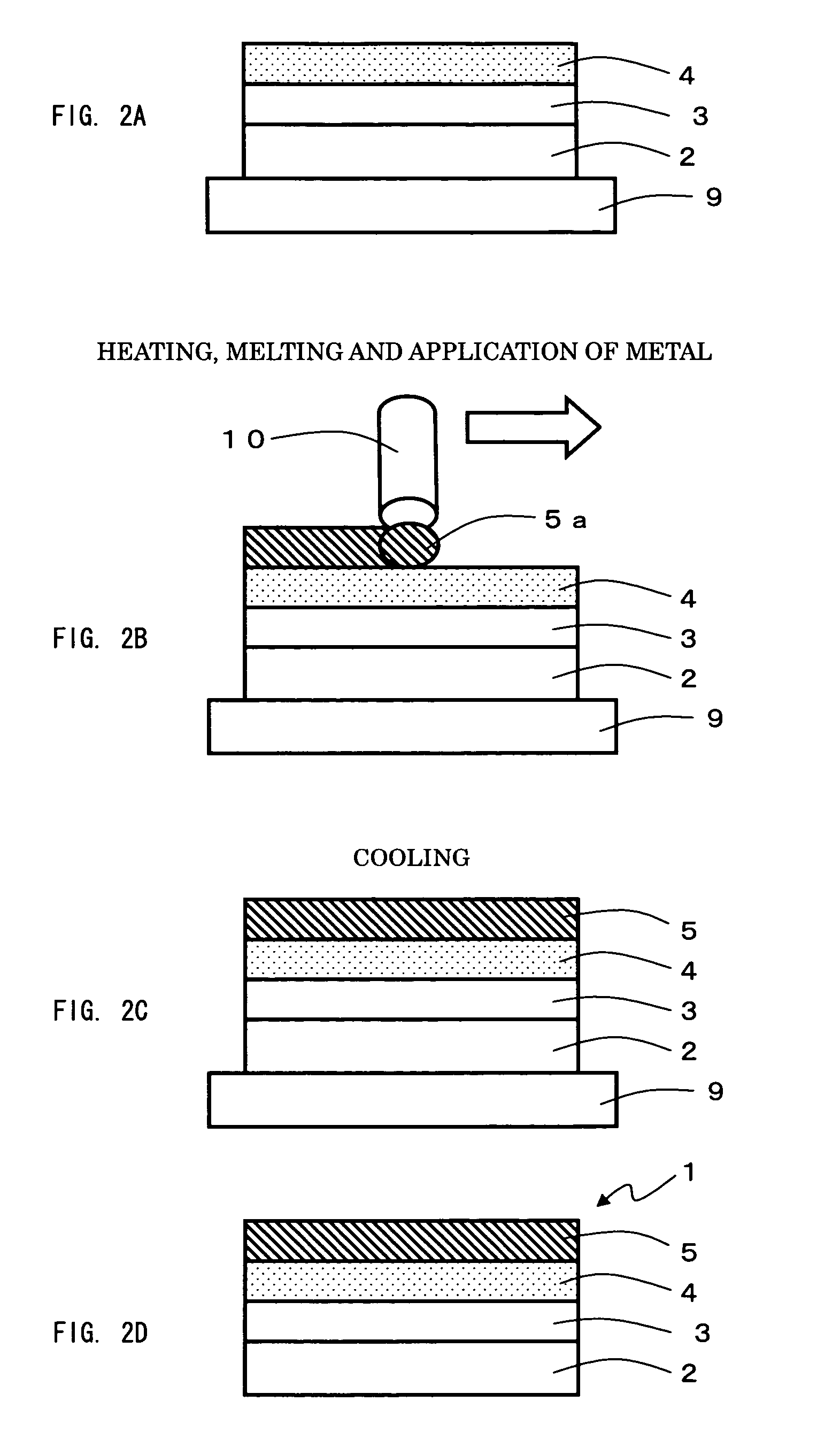Organic functional element and method for manufacturing same
a functional element and organic technology, applied in the field of organic functional elements, can solve the problems of limited method of vapor deposition of low-molecular materials with masks, consume almost the same power as in the full display state, and achieve the effects of easy expansion, low cost, and high reliability
- Summary
- Abstract
- Description
- Claims
- Application Information
AI Technical Summary
Benefits of technology
Problems solved by technology
Method used
Image
Examples
example 1
[0141] The following solution was prepared in the example of the present invention.
[0142]
Polyvinyl carbazole70parts by weightOxadiazole compound30parts by weightFluorescent dye1part by weightMonochlorobenzene (solvent)4900parts by weight
[0143] When the fluorescent dye is coumarin 6, a green emission having a peak at 501 nm was obtained; in the case of perylene, a blue emission having a peak at 460 to 470 nm was obtained; and in the case of DCM (dicyanomethylene pyran derivative), a red emission having a peak at 570 nm was obtained. These were used as light emitting materials of the respective colors.
[0144] An organic EL element having a sectional shape shown in FIG. 9 was manufactured. A substrate 52 was glass, and a transparent electrode 53 was ITO of 200 nm in thickness. After the substrate 52 was washed, PEDOT / PSS (Bayer CH8000 manufactured by Bayer AG) was applied as a hole injection layer 56 to a thickness of 80 nm by spin coating and formed by baking at 160° C.
[0145] Then, ...
example 2
[0152] The same element as in Example 1 was manufactured except that the metal of the cathode was an alloy of Bi—Pb—Sn (50.0:31.2:18.8%).
example 3
[0153] The same element as in Example 1 was manufactured except that the metal of the cathode was an alloy of Bi—Pb—Sn (50.0:28.0:22.0%).
PUM
| Property | Measurement | Unit |
|---|---|---|
| glass transition temperature | aaaaa | aaaaa |
| melting point | aaaaa | aaaaa |
| melting point | aaaaa | aaaaa |
Abstract
Description
Claims
Application Information
 Login to View More
Login to View More - R&D
- Intellectual Property
- Life Sciences
- Materials
- Tech Scout
- Unparalleled Data Quality
- Higher Quality Content
- 60% Fewer Hallucinations
Browse by: Latest US Patents, China's latest patents, Technical Efficacy Thesaurus, Application Domain, Technology Topic, Popular Technical Reports.
© 2025 PatSnap. All rights reserved.Legal|Privacy policy|Modern Slavery Act Transparency Statement|Sitemap|About US| Contact US: help@patsnap.com



